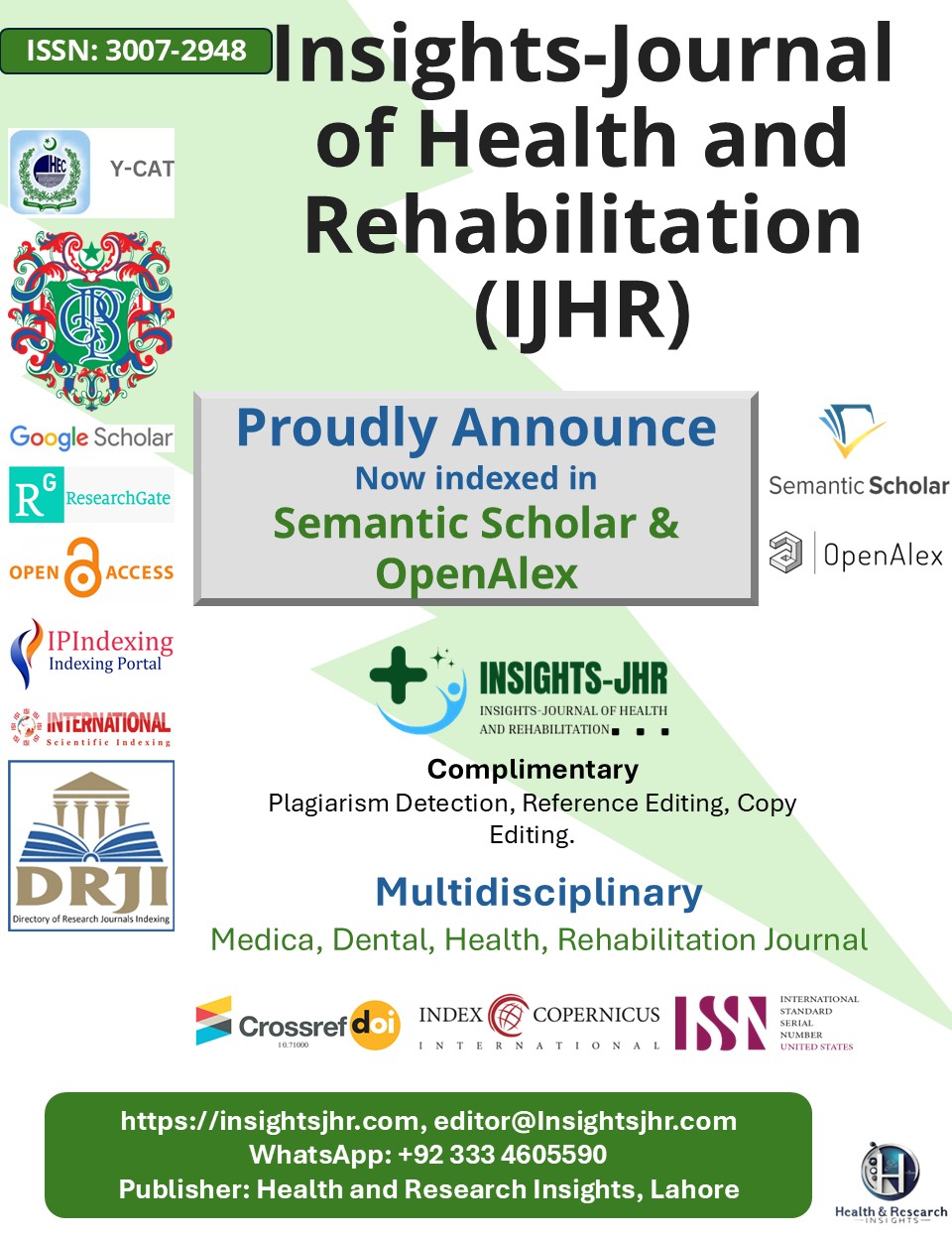FREQUENCY OF ISOLATED NASO-ORBITO ETHMOID FRACTURE IN MAXILLOFACIAL TRAUMA PATIENTS PRESENTING TO TERTIARY CARE HOSPITAL
DOI:
https://doi.org/10.71000/pfb7vk69Keywords:
Epiphora, Diplopia, Maxillofacial Trauma, Naso-Orbito-Ethmoid Fractures, Telecanthus, Road Traffic AccidentsAbstract
Objective: This study aimed to evaluate the frequency of isolated naso-orbito-ethmoid (NOE) fractures in maxillofacial trauma patients presenting to a tertiary care hospital.
Methodology: A sample size of 65 patients was selected for this study. Patients aged 18–60 years with maxillofacial trauma within two week of the trauma were included, while those with significant morbidity or delayed presentations beyond two weeks were excluded. Diagnosis was confirmed through computed tomography (CT) scans, and clinical features such as telecanthus, epiphora, and diplopia were assessed.
Results: Patient’s mean age was 30.98 ± 10.631 years. The study found that isolated NOE fractures accounted for 7.7% of maxillofacial trauma cases. Type 2 fractures were 60% while type 1 and 3 were 20% each.
Conclusion: Isolated NOE fractures are relatively rare but significant injuries, with Type 2 fractures being the most prevalent. Early diagnosis and prompt surgical intervention are crucial to prevent long-term complications such as telecanthus and epiphora. Increased awareness and preventive measures to reduce road traffic accidents are recommended to mitigate the incidence of such injuries.
Downloads
Published
Issue
Section
License
Copyright (c) 2025 Hina Khan, Ahmad Khan (Author)

This work is licensed under a Creative Commons Attribution-NonCommercial-NoDerivatives 4.0 International License.







